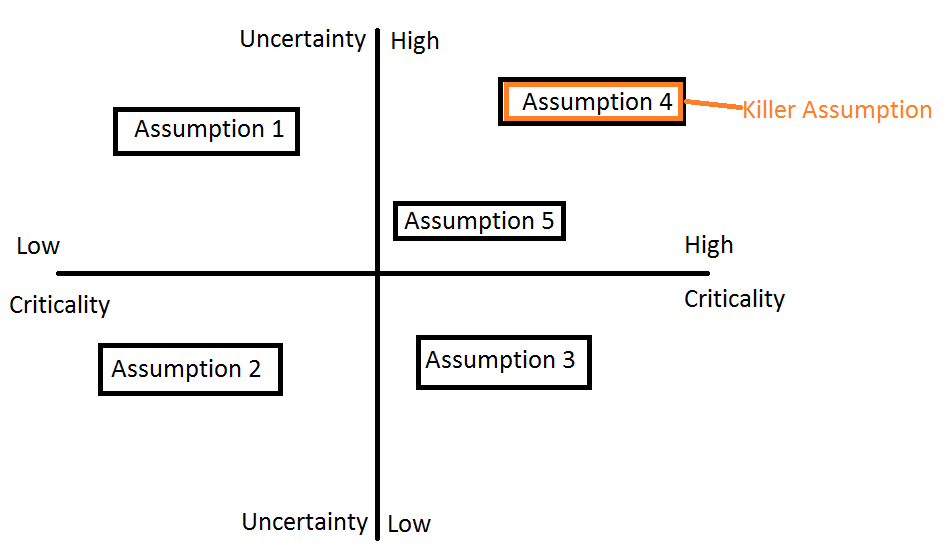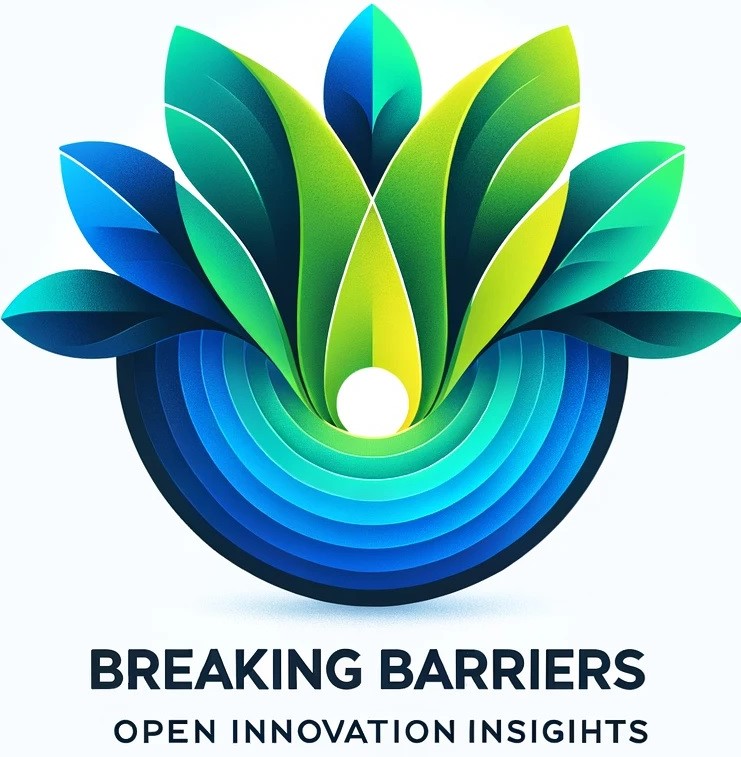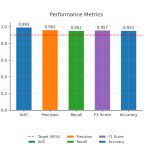
A thought to write on this topic is inspired by the fact that our success on anything we undertake is often as good as assumptions we have made along the way.

The driver for identifying assumptions lies in answering this question, “What must be true for success?” The most effective and agile way to answer this question is by establishing a medium for idea sharing and candid communication between stakeholders. Everyone whether directly or indirectly connected to an idea has a unique yet incomplete understanding of the problem, particularly if the organization is large. It is only by bringing together a diverse group of stakeholders to exchange their individual, partial perspectives that the group can begin to form a common understanding of the problem and technical context as a whole.

Through the focused assumptions discussions, the assumptions that are most critical, and least understood are identified as Killer Assumptions—that is, potentially idea killers if they turned out to be false. To get to the heart of Killer Assumptions, a plan to learn should be developed, not a plan to execute. A Learning Plan outlines the key dimensions of uncertainty and assumes that as learning progresses, so too will opportunities for “pivots,” or shifts in approach, as knowledge of the core problem, that idea solves, evolves.
After killer assumptions are identified, it often doesn’t require a lot to validate. Sometimes sharing in crowd-sourcing and trusted forums are enough. Through the power of collective knowledge and intelligence of participants, the killer assumptions are revealed and also validated.
Another way is through participation in events like ‘Mass Challenge,’ ‘B.E.T.A – Babson Entrepreneurial Thought Leadership and Action’, etc. These, besides learning about innovative solutions that could be relevant to our customers for value-realization, are also good conduits to establish and validate “killer assumptions.” Our agility to innovate and idea validation is catalyzed when problems, problem-solvers, solutions, customers, investors, critiques or precisely the entire ecosystem works in tandem.
Having competed in ‘B.E.T.A’ challenge and reaching semi-finals for one of our ideas to prevent permanent brain injury from repetitive head impacts in young athletes, 14 & under, there is an appreciation for identifying and validating ‘killer assumptions’ about an idea that these events present. (Ref: http://www.babson.edu/news-events/babson-news/Pages/140325-eighteen-semifinalists-in-babson-beta-challenge.aspx). One of the ‘killer assumptions’ we made was that parents would support anything that makes sports safer for their kids. The prototype of the head impact monitor was built using HIC (Head Injury Criterion) –https://en.wikipedia.org/wiki/Head_injury_criterion, with red-yellow-green lights as indicators of the level of impact– red indicated that athlete should undergo concussion protocol. The parents, who also coached resisted because of a fear of getting sued if data showed ‘possibility of a concussion,’ but coaches didn’t follow the concussion protocol. From this experience, we learned that the best way to validate an idea, and before we do anything with it, is to identify and list all ‘killer assumptions’ about that idea and then validate/invalidate those ASAP. We also learned how important it is to liaise with pre-existing consortiums, governing bodies, etc. for validation before going too deep. We also learned that the product roadmap, consisting of the smaller building blocks, got to have assumptions clearly listed against each delivery milestone. The knowledge about assumptions is nothing new. It’s used in project-management widely and indeed cross-pollinated into hypothesis-driven agile development.
These settings, through unrelated solutions offered, are also often a medium to help us help our customers articulate their problems better. A connection that was missing earlier because the environment – the context – that customer is part of still evolving, and it wasn’t clear to them, and so to us, what they wanted and which problem is bothering them the most. It is almost always true when any bleeding edge technology, like AI, Blockchain, Machine Learning, etc., is the basis of our proposed solution to a problem – a problem the customer doesn’t even see. It’s also one of the ways to inspire an “anthropologist persona” in innovators (more on this in the next blog).
One more way to identify assumptions about an idea is to write a business plan. Try doing it irrespective of whether an idea originated in a highly structured and constrained corporate setting or in a startup – write this plan as if you are pitching in to raise funds.
In innovation management, after every ideation process, bring all stakeholders together and ask them to prepare an exhaustive list of ‘killer assumptions’ about promising ideas. A learning plan should then follow, but not an elaborate plan, to validate killer assumptions about that idea. The plan shouldn’t take more than 3 – 4 hours to prepare. If it is then most likely, you have embarked on an elaborate execution plan. It also constitutes the first low-cost filter, after brainstorming on ideas to solve a problem, towards building a portfolio of desirable, viable, and feasible ideas, i.e., the first step in any idea’s journey from purely an idea to an MVP or whatever another vehicle we adopt for value-realization.













